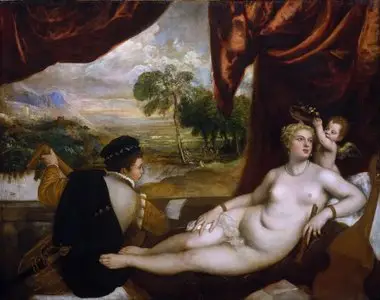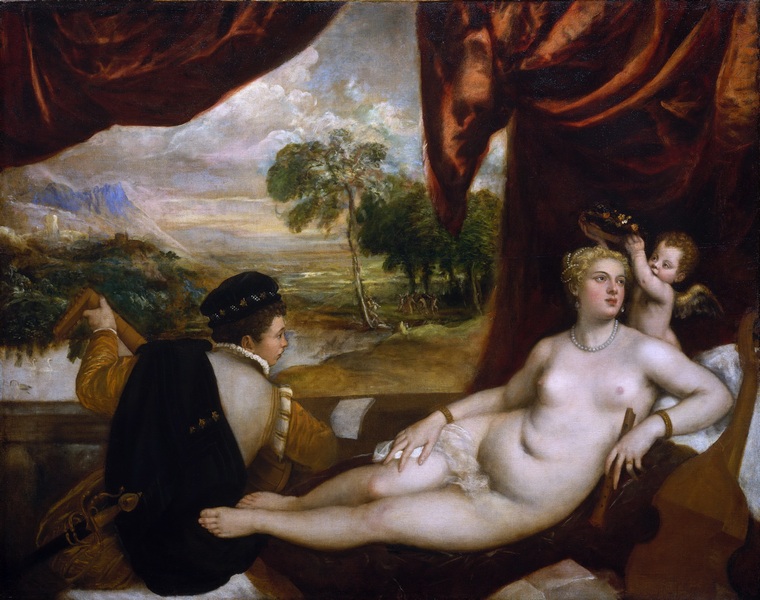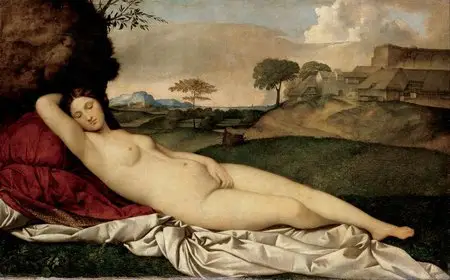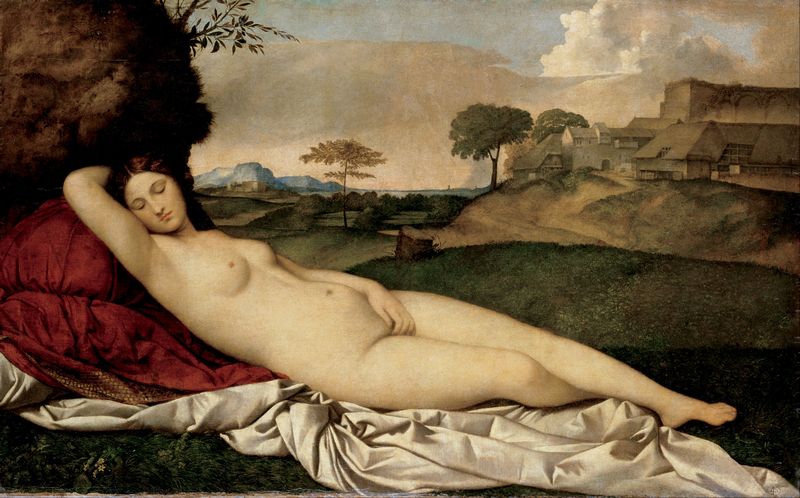Classical Woman Collection of Paintings
210 jpg | up to 2624*7200 | 532.2 MB
210 jpg | up to 2624*7200 | 532.2 MB
Christian attitudes cast doubt on the value of the human body, and the Christian emphasis on chastity and celibacy further discouraged depictions of nakedness, even in the few surviving Early Medieval survivals of secular art. Completely unclothed figures are rare in medieval art, the notable exceptions being Adam and Eve and the damned in Last Judgement scenes, and the ideal forms of Greco-Roman nudes are completely lost, transformed into symbols of shame and sin, weakness and defenselessness. This was true not only in Western Europe, but also in Byzantine art. Increasingly, Christ was shown largely naked in scenes of his Passion, especially the Crucifixion, and even when glorified in heaven, to allow him to display the wounds his sufferings had involved. The Nursing Madonna and naked "Penitent Mary Magdalene", well as the infant Jesus, whose penis was sometimes emphasized for theological reasons, are other exceptions with elements of nudity in medieval religious art.
By the late medieval period female nudes intended to be attractive edged back into art, especially in the relatively private medium of the illuminated manuscript, and in classical contexts such as the Signs of the Zodiac and illustrations to Ovid. The shape of the female "Gothic nude" was very different from the classical ideal, with a long body shaped by gentle curves, a narrow chest and high waist, small round breasts, and a prominent bulge at the stomach. Male nudes tended to be slim and slight in figure, probably drawing on apprentices used as models, but were increasingly accurately observed.
The rediscovery of classical culture in the Renaissance restored the nude to art. Donatello made two statues of the Biblical hero David, a symbol for the Republic of Florence: his first (in marble, 1408–1409) shows a clothed figure, but his second, probably of the 1440s, is the first freestanding statue of a nude since antiquity, several decades before Michelangelo's massive David (1501-04). Nudes in Michelangelo's Sistine Chapel ceiling reestablished a tradition of male nudes in depictions of Biblical stories; the subject of the martyrdom of the near-naked Saint Sebastian had already become highly popular. The monumental female nude returned to Western art in 1486 with The Birth of Venus by Sandro Botticelli for the Medici family, who also owned the classical Venus de' Medici, whose pose Botticelli adapted.
The Dresden Venus of Giorgione (c. 1510), also drawing on classical models, showed a reclining female nude in a landscape, beginning a long line of famous paintings including the Venus of Urbino (Titian, 1538), the Rokeby Venus (Diego Velázquez, c. 1650), Goya's Nude Maja (c. 1798) and Manet's Olympia (1863). Although they reflect the proportions of ancient statuary, such figures as Titian's Venus and the Lute Player and Venus of Urbino highlight the sexuality of the female body rather than its ideal geometry. In addition to adult male and female figures, the classical depiction of Eros became the model for the naked Christ child.
Raphael in his later years is usually credited as the first artist to consistently use female models for the drawings of female figures, rather than studio apprentices or other boys with breasts added, who were previously used. Michelangelo's suspiciously boyish Study of a Kneeling Nude Girl for The Entombment (Louvre, c. 1500), which is usually said to be the first nude female figure study, predates this and is an example of how even figures who would be shown clothed in the final work were often worked out in nude studies, so that the form under the clothing was understood. The nude figure drawing or figure study of a live model rapidly became an important part of artistic practice and training, and remained so until the twentieth century.
In Baroque art, the continuing fascination with classical antiquity influenced artists to renew their approach to the nude, but with more naturalistic, less idealized depictions, perhaps more frequently working from live models. Both genders are represented; the male in the form of heroes such as Hercules and Samson, and female in the form of Venus and the Three Graces. Peter Pаul Rubens, who with evident delight painted women of generous figure and radiant flesh, gave his name to the adjective rubenesque.
In the later Baroque or Rococo period, a more decorative and playful style emerged, exemplified by François Boucher's Venus Consoling Love, likely commissioned by Madame Pompadour.
Giorgione, Sleeping Venus (c. 1510),
Gemäldegalerie Alte Meister, Dresden
Modern Woman Collection of Paintings
Send me a message if any link is broken
Please visit my blog on AvaxHome!
Find more artists on AvaxHome!
Gemäldegalerie Alte Meister, Dresden
Modern Woman Collection of Paintings
Send me a message if any link is broken
Please visit my blog on AvaxHome!
Find more artists on AvaxHome!





